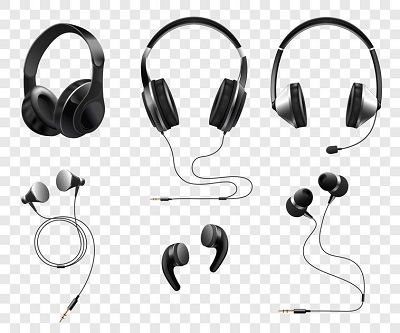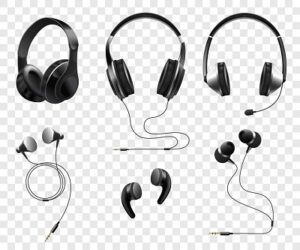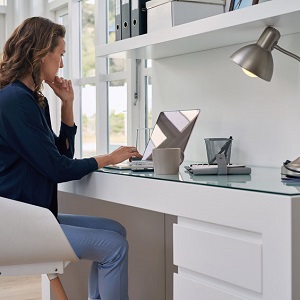How to decide between using Headphones or Earphones
The increase in people working from home using remote communication media (think Zoom) has increased the interest in headphones and earphones from people, particularly women, who previously had only used headphones intermittently.
Airlines give away earphones but collect headphones before landing? Is that telling, or is this a competition that doesn’t need to be? The real discussion is what performs better at the quality you want and price you can afford, as you do what you want to do. But, it’s also a discussion about safely using them whenever you do.
Whether you’re sitting in a plane, out on a run or walk, in bed in your own little world of podcasts or movies, work in a shared office setting or have started working from home, you’re likely using some sort of personal speaker system. Types are divided between in-ear (earphones/earbuds) and on-ear/over-ear (headphones). Both types offer Bluetooth wireless versions as well as ones with plug-in cords. Earphones generally insert into the ear cavity, while with headphones, some sit atop the ear (on-ear), while others fully enclose the ear (over-ear).
Both types can damage your hearing
Exposure to loud noise is the most common cause of hearing loss. Persistent exposure to noise at above 85dB is likely to permanently damage your hearing, and personal music is usually listened to at 75-105dB. Bringing amplified sound into or onto your ears creates a higher risk of hearing loss, either from high volume or prolonged use. As earphones sit inside the ear canal, nearer the inner ear, the risk to your hearing is likely to be greater than headphones at a similar volume.
The danger of permanent hearing loss can be minimised by limiting the volume you listen at, how long you are plugged in and how often you use your earphones or headphones. In lieu of any definitive measures, take the 60/60 recommendation – 60% maximum volume for 60 minutes only.
Noise-cancelling
Noise-cancelling earphones or headphones are considerably more expensive than passive devices. They block, or cancel, unwanted low-frequency noise so you can enjoy whatever it is you want to listen to with greater clarity. The technology of this, simply put, is to actively ‘cancel’ ambient sounds with an opposite sound to neutralise them. Noise cancelling earphones/headphones have external microphones to pick up these sounds. Noise-cancelling devices require battery power to operate, through attached pack or recharge.
Earphones
The size, portability and cost of earphones are their strong advantage. You are generally choosing them to fit a situation, not for a quality sound experience. They sit inside the ear, so the comparatively low quality of the sound (small speakers, lack of balance and bass notes) is offset by immediacy, eliminating some ambient noise or the need to increase the volume.
Not every earphone will sit comfortably in every ear. Low-cost earphones may not come with variable tip size attachments or in softer materials. If you have trouble keeping earphones in place, if they dislodge with movement or especially when active, try looping the cord and inserting the bud over top of the ear rather than just sit the bud in the ear from below.
Poor fitting earphones affects the sound quality, increasing possible overcompensation with volume, can scratch and aggravate your ears and, annoyingly, keep falling out. Earphones are best suited to when you’re exercising, minimising your packing or as a backup to headphones.
Headphones
On-ear or over-ear headphones, because of their size, can offer larger, better quality speakers and performance for both bass and treble. On-ear headphones will admit more ambient noise than over-ear ones, which enclose the ears more fully. Comfort factors will depend on time usage. On-ear can be uncomfortable with prolonged use, while over-ear can be hot and comfort can ultimately depend on whether they actually cover or need to cram your ears.
Over-ear headphones are physically larger than on-ear models. This might be a factor if using the headphones out of home or packing for travel. The high cost of noise-cancelling versions means many people do with either earphones or cheaper headphones when travelling.
Your choice
It’s best not to think you have to choose between types of headphones. A simple earphone will do, but a noise-cancelling headphone will be much better. The only non-negotiable is looking after your comfort and hearing.





0 Comments